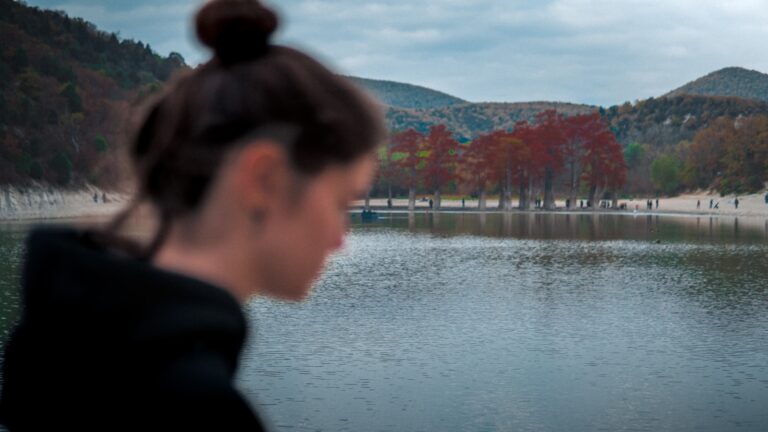The river whispered. The breeze carried stories of another time, another life, as I stepped into Can Tho’s Ancient Market—a place where the past lingers like the sweet scent of frangipani in the air. This was not just a market. It was a heartbeat, a living memory nestled by the wide, slow-moving waters of the Hau River.
It was morning, but already the market pulsed with life. The sky above stretched soft and pale, the kind of endless blue that holds promises. And here below, between rows of colorful stalls and gentle smiles, time itself seemed to slow to allow me to breathe in the beauty of the moment.
The Can Tho Ancient Market has stood gracefully since 1915, its bones both sturdy and elegant, much like an aging ballerina still holding her poise. Built at the same time as Saigon’s iconic Ben Thanh Market, its architecture carries the dual spirit of the modern and the ancient. Its cement frame, once whitewashed and now tinged with the golden hues of time, rises proudly under a red-tiled roof, as if standing guard over the flowing river at its back.
The wind from the river brushed my face, soft as silk, carrying the scent of spices, fresh herbs, and the laughter of children. I wandered past stalls where vendors, with warm eyes and brighter smiles, greeted visitors not as customers but as old friends. There was no rush here, no pressure. Only the gentle rhythm of life, the ebb and flow of voices, footsteps, and the rustle of silk.
I paused at a tiny shop where a woman—her name was Nguyen Thu Diep—carefully folded a traditional Vietnamese áo dài. The fabric danced in the breeze, printed with symbols of Vietnam’s ancient past: bronze drums and stilt houses. It was delicate, beautiful, and modestly priced at just 350,000 dong—about fifteen dollars. A young woman, her skin as dark as polished mahogany, chose her áo dài, her face radiant. The dress wasn’t just fabric. It was a story, a piece of Vietnam to carry home. Thu Diep told me with a smile that these dresses were popular with foreign visitors, who sought something real, something with roots.
As I moved along, other stalls unfolded before me like chapters in a well-worn novel. There were wooden statues of graceful Vietnamese women, lacquer paintings that shimmered in the sun, and whimsical carvings of water buffalo and pigs—symbols of the Mekong Delta’s ancient civilization. Some stalls, surprisingly, sold Christian icons: wooden crosses, images of the Virgin Mary, all framed in golden lacquer with Bible verses delicately engraved.
A young woman pulled me gently toward another stall, laying out T-shirts and embroidered scarves with a sparkle in her eyes. There was no aggressive selling here, no harsh voices—only kindness, gentleness, and the art of suggestion. Lanterns from Hoi An glowed softly in one corner, their silk skins catching the light. Tablecloths, hand-embroidered with painstaking detail, were stacked in neat piles. I ran my fingers across the fabric, each stitch telling a story of patience, of hands that have known hardship and yet still create beauty.
In another corner, two girls sat cross-legged on woven mats, their nimble fingers threading beads into shimmering handbags. An elderly woman strung strands of yellow plastic beads into a delicate curtain. Their faces were serene, their movements precise. In a world that moves too fast, this market was an island of slowness, of craft, of humanity.
The Ancient Market stands on Hai Ba Trung Street, near the storied Ninh Kieu Wharf—a name that evokes poetry and nostalgia in Vietnamese hearts. The Wharf, once a bustling river port, is now a favorite destination for tourists seeking to touch the past. Long ago, boats set out from this very dock, weaving their way across the Mekong’s maze of waterways to every corner of the southern land. The air, even at noon, was cool and forgiving as I walked past the old dock. Vendors smiled but did not chase. They offered boat tours to the floating markets, to orchards heavy with tropical fruit, and to the grand sweep of the Can Tho Bridge. The price was 300,000 dong, but the boat woman, Phan Thi Thanh Huong, leaned closer with a wink, whispering that she would take me halfway for half the price.
But it wasn’t about the money. It was the charm, the easy warmth of people who live by the river and have learned its patience. Here, no one insisted, no one judged. A simple “no” was met with a nod and a smile.
I watched families board boats for private dinners and others catch free ferries to Victoria Resort. I heard laughter, the pluck of a guitar, and the low hum of an old man’s song carried on the wind. For 80,000 dong, I could have journeyed to Con Au Islet, where live traditional music still fills the air and dishes of grilled fish and river shrimp are served under the trees. There was a freedom here—on the water, under the endless sky—that no city could contain.
Beyond the waterfront, Ninh Kieu blooms into a green park, the riverside lined with ironwood trees standing like silent guardians. Grass as soft as a child’s hair unfurled beneath my feet. The city, in 2009, gave this place new life—transforming the area into a walking street, an open-air market of food, music, and souvenirs, alive from dusk until the soft breath of dawn.
But Can Tho holds more than markets and rivers. There is the sacred hush of Ong Pagoda, a small Chinese temple built in 1894 by immigrants from Guangdong. From the moment I stepped through its bright red gate, I felt transported. Twin ceramic lions stood guard. Inside, the air smelled of incense and old wood. Every beam, every carving, every curve of the roof had been brought from China a century ago, each piece carrying the dreams of those who built this sanctuary far from home.
The temple honors Guan Gong, the Chinese god of loyalty and righteousness, though the local people affectionately call it “Ong Pagoda”—Grandfather’s Temple. It is also home to the Sea Goddess and the Goddess of Mercy, embodying both strength and compassion. As I walked through, my fingers traced ancient calligraphy and carved dragons locked in eternal dance.
I met Vuong Chieu Vy, a young man with gentle eyes who has volunteered at the temple for six years. I asked him why he gave so much time without expecting anything in return. His answer, soft but firm, stayed with me: “I just want to offer something to the temple. I don’t ask for money. Money comes with talent and heart. You can’t pray for everything. Certain things require hard work and dedication.”
As the sun dipped low, casting the temple in gold and shadow, I thought of the Lantern Auction Festival, the temple’s most beloved tradition. Every year, the community gathers to bid on lanterns—believing that to bring one home is to bring good fortune, peace, and prosperity. The proceeds help build schools, support orphans, and fund local charities. In this quiet corner of the world, generosity is not shouted—it is lived.
As the evening deepened, I returned to the riverside, where the wind still sang and the lights of Can Tho shimmered like a thousand stars upon the water. I sat at Sao Kim restaurant, sipping a warm cappuccino as the sky turned lavender. The waitresses wore áo dài in shades of soft pink and deep green, their smiles as timeless as the river itself.
Can Tho is not just a destination to visit. It’s a place that lives inside you long after you leave. It whispers to you, gently, like the breeze that drifts over the water, carrying stories of the past, of kindness, of resilience—and of a world that still knows how to be beautiful.




